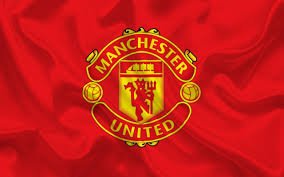Globaltraded.com — Manchester United, one of the most iconic football clubs in the world, has also become a globally recognized public company. Listed on the New York Stock Exchange (NYSE) under the ticker symbol “MANU,” Manchester United went public on August 10, 2012. The Glazer family, who gained majority control of the club in 2005, led the decision to go public in order to raise capital and reduce the club’s substantial debt burden. At its initial public offering (IPO), the club’s shares were priced at $14 each, raising approximately $233 million, although this fell short of initial price expectations set between $16 and $20 per share. Since then, Manchester United’s stock price has seen ups and downs, reflecting both internal dynamics within the club and broader market conditions.
Compared to its IPO price of $14, Manchester United’s stock price has generally been higher in recent years, largely due to the club’s strategic initiatives, sponsorship deals, and the strength of its brand value. However, fluctuations in performance on the pitch have had a marked impact on stock valuation. As of the past year, the stock’s price performance has shown volatility, particularly with speculation around a potential sale by the Glazer family. News of a possible takeover bid in late 2022 and into 2023 spurred notable jumps in share value as investors anticipated a change in leadership that could revitalize the club both on and off the field. With bidders from various global entities reportedly interested, stock prices have occasionally surged with each new development, even though the club’s on-field performance has remained inconsistent.
Manchester United’s financial performance as a public company is driven by several revenue streams: commercial partnerships, broadcast rights, and matchday income. Commercial partnerships, including high-profile sponsorship deals with brands like Adidas and TeamViewer, are the backbone of the club’s revenue, accounting for a significant portion of its annual earnings. According to recent financial reports, Manchester United generated over £600 million in annual revenue, although net profits have been inconsistent. High player wages, transfer fees, and operational costs weigh heavily on profitability, sometimes resulting in net losses despite strong revenue figures. The club’s financial performance is partly insulated from on-field results due to its enduring brand and fan loyalty; however, a lack of silverware and missed Champions League qualifications have influenced some revenue streams, particularly broadcast rights and merchandise sales.
Despite challenges, Manchester United’s share performance over the past year has been largely positive, influenced by acquisition rumors rather than operational outcomes. Speculation over a potential sale by the Glazer family has kept investors engaged, with interest fueled by the prospect of fresh capital and possibly a new strategic direction. Nevertheless, the club’s debt load and volatile earnings underscore the complexities Manchester United faces as both a sports team and a publicly traded business. The club’s global fan base remains a valuable asset, but financial stability and future stock performance may ultimately hinge on achieving consistent results on the pitch and addressing longstanding fiscal challenges.

In the past five years, Manchester United’s total revenue trend has shown variation, influenced by both internal factors such as on-field performance and external factors like the COVID-19 pandemic. Here is a summary of Manchester United’s annual revenue trend based on their financial reports:
- 2019: Manchester United’s revenue peaked before the pandemic, reaching around £627 million. This was driven by strong commercial revenue and participation in the UEFA Champions League.
- 2020: The COVID-19 pandemic had a significant impact, lowering revenue to approximately £509 million. Revenue declined due to match delays, restrictions on stadium attendance, and reduced commercial income tied to events.
- 2021: The pandemic continued to impact revenue, although the club partially recovered with total revenue of about £494 million. Broadcasting revenue increased as the match schedule normalized, but the absence of fans at games limited matchday revenue.
- 2022: The club’s revenue rebounded more strongly, rising to around £583 million. This recovery was driven by the return of fans to stadiums, higher matchday revenue, and stability in commercial and broadcasting income.
- 2023: Total revenue is expected to increase again, with estimates reaching around £640 million. Despite mixed on-field results, stable sponsorship contracts and matchday revenue have supported the overall increase.
Overall, while the team’s on-field performance has been inconsistent, Manchester United’s revenue has remained strong, supported by global commercial revenue and a broad fan base.























































